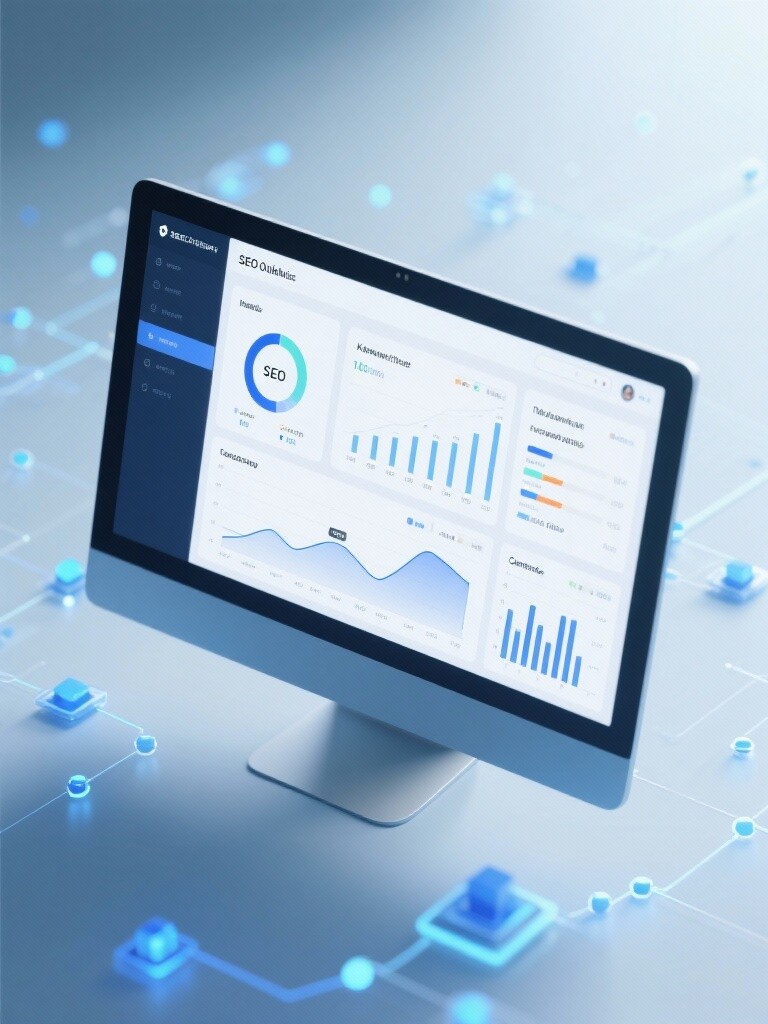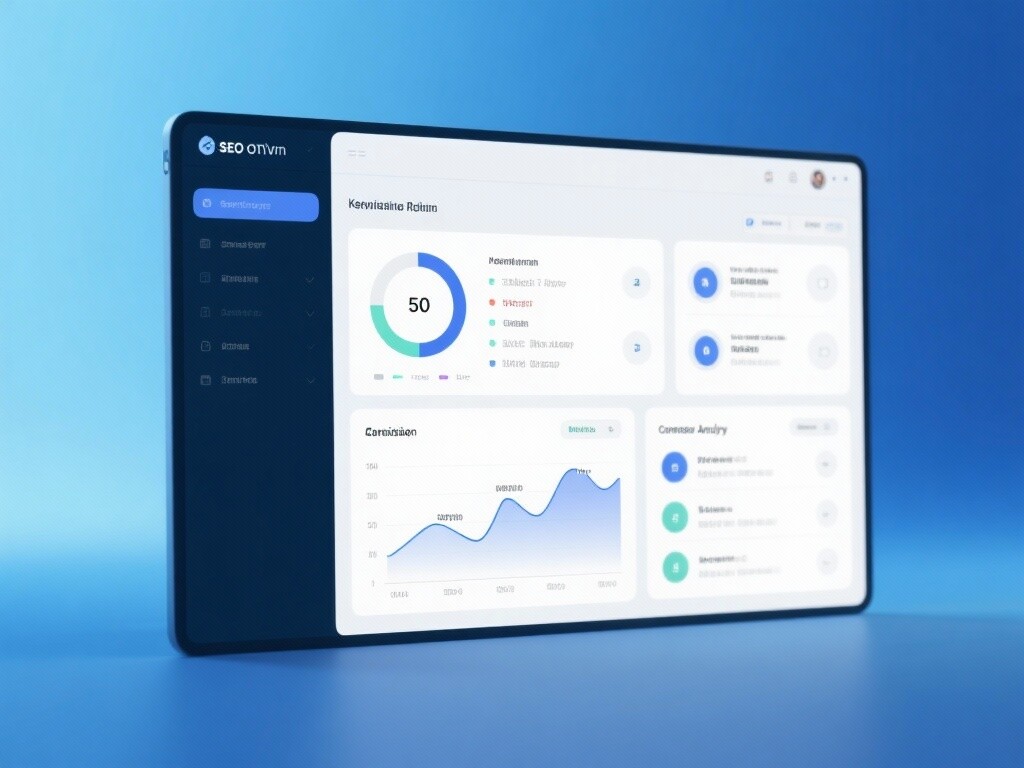Easy Camp Cloud Intelligent Website Construction and Marketing System Platform!
I. The Authoritative Definition and Core Value of SEO Optimization Tools
1. Definition of SEO Optimization Tools
SEO optimization tools refer to a set or series of software, platforms, and data services used to assist, automate, and enhance search engine optimization activities. Their core functions include data collection, website diagnostics, keyword analysis, content performance tracking, and competitor monitoring . By simulating the behavior of search engines (such as Googlebot) and building a vast database of historical data and links, they provide SEO experts with decision-making support and improved execution efficiency .
2. The Core Value of SEO Optimization Tools in Digital Strategy
II. The Development History of SEO Optimization Tools: From Log Analysis to AI Integration Platforms
The evolution of SEO optimization tools reflects the explosion of data volume, the increase in algorithm complexity, and the need for tool integration.
1. Early Stage: Log Analysis and Manual Inspection (1995-2005)
Tool types: mainly website server log analyzers and simple keyword density calculators .
Features: It relies on manual analysis of crawler access logs to determine crawling status; it lacks large-scale data, and optimization depends heavily on experience and guesswork .
Example: A simple ranking query tool.
2. Database Construction and the Rise of SaaS Platforms (2005-2015)
Technological breakthrough: The emergence of large-scale web crawlers led to the construction of databases containing keywords and backlinks .
Operational Transformation: One-stop SaaS platforms such as SEMrush and Ahrefs began to emerge, integrating functions such as keyword research and competitive analysis. SEO experts were able to conduct data-driven competitive analysis .
Free tools: **Google Analytics and Google Search Console** become part of your SEO infrastructure.
3. AI-driven, integrated, and content-generated content (2015 to present)
AI Core: Tools are beginning to leverage machine learning for deeper analysis, such as content topic cluster recommendations, keyword intent judgment, and keyword difficulty scoring .
Integration trend: Tools not only provide data, but also integrate with CMS systems (such as Yoast SEO) to enable real-time collaboration between content creation and SEO optimization .
Future direction: Combine with LLM (Large Language Model) to achieve automatic generation of content outlines and automatic labeling of structured data .
III. The Technical Principles of SEO Optimization Tools: Three Underlying Supports
The reason why SEO optimization tools can provide accurate data is based on their three core technologies.
1. Web crawler simulation and webpage rendering technology
Principle: Professional SEO tools have their own large-scale crawler systems that mimic the behavior of Googlebot , periodically crawling massive amounts of web pages around the world.
Key: Full JavaScript rendering capabilities are essential to see the final content and link structure of a modern website, enabling accurate diagnosis of technical SEO errors and the discovery of backlinks .
2. Keyword and Backlink Database Construction
Keyword Database: The tool crawls hundreds of millions of search results pages (SERPs) and combines clickstream data and Google Ads/Planner data to build a massive database containing search volume, click-through rate (CTR), and search intent .
External link databases: These databases continuously crawl the link relationships between web pages to build an external link index . They form the basis for competitive analysis and domain authority assessment .
3. AI/Machine Learning and Predictive Models
Application: The tool utilizes AI to perform in-depth processing of data. For example:
Keyword Difficulty (KD) Score: The algorithm assesses the difficulty of achieving a high ranking.
Topic cluster recommendation: Recommend related content topics based on semantic similarity and user search behavior.
Traffic prediction: Based on historical trends and ranking positions, predict potential monthly organic traffic .
IV. Core Classifications and Functional Features of SEO Optimization Tools
Professional SEO optimization tools can be divided into four main categories based on their main functions:

1. Keyword research and intent analysis tools
Features: Provides **monthly search volume, competition level, and search intent (transaction, information, navigation) for a massive number of keywords**. Helps SEO experts discover high-ROI long-tail keywords and themes.
Tools used: SEMrush Keyword Magic Tool, Ahrefs Keyword Explorer, Google Keyword Planner.
2. Technical SEO Diagnostic and Audit Tools
Features: Simulates web crawler behavior to comprehensively check the technical health of a website , including dead links, crawling errors, page load speed, Hreflang errors, indexing status, etc.
Tools used: Screaming Frog SEO Spider, Google Search Console, Ahrefs Site Audit.
3. Link Analysis and Competitor Tools
Features: Tracks the source, anchor text, and authority of backlinks (external links) ; analyzes competitors' backlink growth rate and keyword ranking to conduct gap analysis .
Tools used: Ahrefs Site Explorer, Majestic SEO, Moz Link Explorer.
4. Content optimization and auxiliary tools
Features: Helps optimize content structure, reading experience, and SEO elements (titles, meta descriptions). Provides content scoring to ensure content closely matches user intent and Google algorithm requirements .
Tools used: Surfer SEO, Frase, Yoast SEO/Rank Math (CMS plugin).
V. In-depth application of SEO optimization tools and growth strategies
The value of SEO optimization tools lies in their continuous application throughout the growth flywheel .
1. Strategic Planning Phase: Identifying High ROI Opportunities
Application: Identify low-competition, high-potential long-tail keywords by utilizing keyword difficulty and search volume data .
Tip: Use content gap analysis to identify core topics that competitors have covered but that you lack.
2. Execution and Optimization Phase: Efficiency and Compliance
Application: Use technical diagnostic tools (such as Screaming Frog) to conduct large-scale website audits , identify and fix errors that affect crawling and indexing.
Tip: When creating content, use content optimization tools to ensure the article's topic coverage and structured data are correct, thereby improving content quality.
3. Monitoring and Reporting Phase: Continuous Iteration
Applications: Real-time monitoring of keyword rankings, traffic trends, and backlink growth to evaluate the effectiveness of SEO strategies.
Tip: Analyze keywords with low click-through rates (CTR) using Google Search Console data, optimize titles and meta descriptions, and improve traffic efficiency.
VI. YiYingBao: Your SEO Optimization Tool Integration and Strategy Implementation Expert
The core of YiYingBao's SEO optimization services lies in its deep mastery and integration of a professional SEO optimization tool stack , transforming data into actionable growth strategies .
Deep integration of tool stacks and data interpretation: We not only use industry-leading tools such as Ahrefs and SEMrush , but more importantly, we can cross-validate and deeply interpret the data from these tools to provide you with accurate and actionable SEO growth solutions .
AI-driven content cluster strategy: Leverage the tool's topic modeling and competitive analysis capabilities to plan the most authoritative and high-conversion-potential content clusters for you in EEAT.
Technical risk warning and remediation: Through automated auditing tools , monitor the technical health of the website in real time and discover and fix technical vulnerabilities before Google algorithm adjustments.
High ROAS Keyword Targeting: Focus on using tools and data to target keywords with strong conversion intent and high commercial value , ensuring your SEO investment achieves the highest return on advertising expenditure (ROAS) .
FAQ
1. Do beginners have to use paid tools for SEO optimization?
Recommendation: Initially, focus on free official tools; once they are mature, paid tools must be used.
Free tools (essential): Google Search Console (to view the actual crawling and indexing status of a website), Google Analytics 4 (to analyze user behavior and conversions).
The necessity of paid tools: Free tools cannot provide competitor backlink data, accurate keyword difficulty analysis, and large-scale website crawling audits . Without paid tools, you will be completely passive in competitive analysis.
2. Are the "keyword difficulty" scores provided by SEO optimization tools reliable?
Keyword difficulty (KD) scores are reliable, but should not be the sole basis for decision-making.
Principle: KD score is a relative indicator calculated by the tool based on its backlink database and the domain authority of the ranking website .
Application: It can serve as a reference for initial screening . The final decision should combine search intent (what users want to see) and content quality gap (whether your content can surpass the top ten).
3. How many times a year should a "technical SEO audit tool" be used?
Recommendation: Conduct a comprehensive technical audit at least once per quarter and continuously monitor key metrics.
Comprehensive audit: 3-4 times a year, using tools such as Screaming Frog for deep crawling to check for redirection chains, dead links, Hreflang errors , etc.
Continuous monitoring: Monitor crawl errors, index coverage , and **Core Web Experience (CWV)** score daily/weekly in Google Search Console to ensure your website's technical health meets real-time standards.
4. How can SEO tools help me build "Content Authority" (EEAT)?
Through topic cluster analysis and content quality scoring.
Topic Clustering: The tool identifies all relevant sub-questions a user searches for under a given topic . You use the tool to plan content, ensuring comprehensive coverage of these sub-questions, thereby building **"expertise"** into the algorithm.
Content scoring: The content optimization tool analyzes the differences in keyword density, content length, and structured elements of your articles based on the top-ranking pages , guiding you to create more in-depth and authoritative content.

Customer Reviews
Mr. Yang, CEO of a B2B Industrial Software SaaS Platform
"Our previous SEO strategy was based on guesswork, and the results were inconsistent. The first thing the EasyOperate team did for us was integrate and interpret data from Ahrefs and SEMrush. They used the tools' content gap analysis feature to help us discover high-converting long-tail keywords that competitors had overlooked. Now, our organic search traffic has achieved over growth in both quality and quantity, and lead acquisition costs are lower than paid ads. In their hands, professional SEO optimization tools truly became a driving force for growth."
Ms. Liu, CMO of a D2C Cross-border E-commerce Marketplace
"Our understanding of SEO optimization tools was limited to ranking queries. The EasyOperate team guided us in using Screaming Frog to conduct a comprehensive technical audit, uncovering numerous internal redirect links and crawling errors. After fixes, our website indexing rate and page loading speed (CWV) improved significantly. More importantly, they leveraged tool data to help us optimize product page titles and meta descriptions, increasing our organic search click-through rate (CTR) by . Their tool utilization and data interpretation capabilities are our core competitive advantage."





